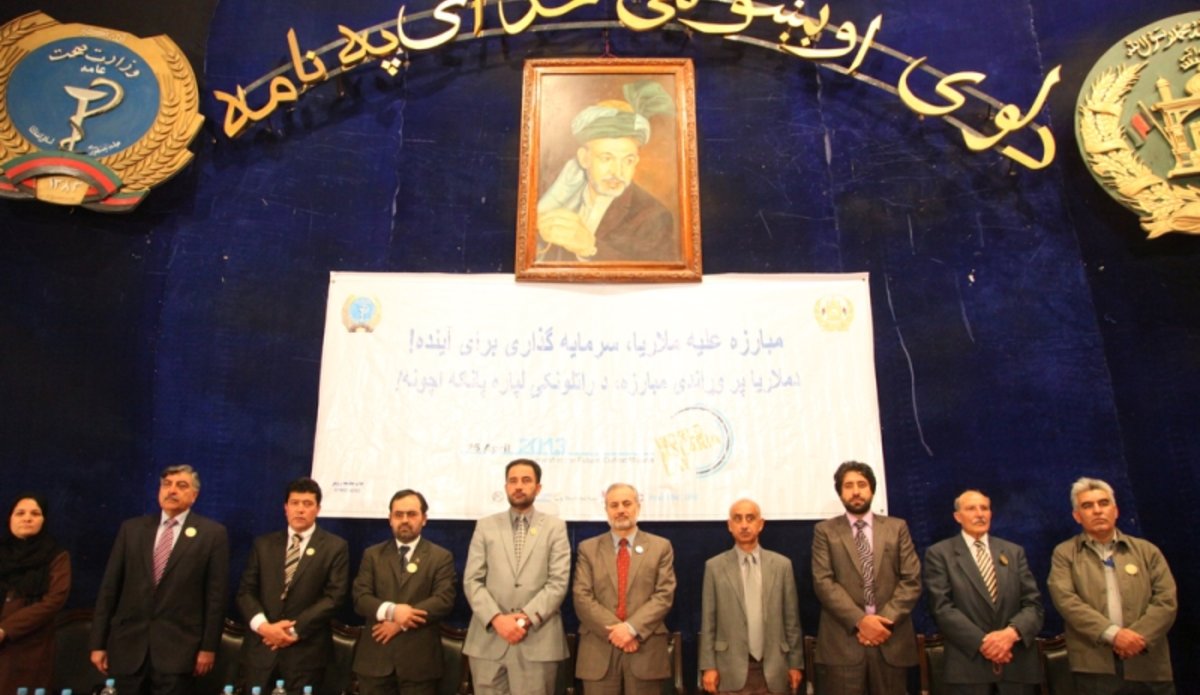Afghanistan’s health ministry reports significant decrease in malaria cases
KABUL - Afghanistan’s Ministry of Public Health has reported a significant reduction in malaria cases in the country as a result of the “successful implementation” of its national programme to control and prevent the disease.
“A 98 per cent reduction has been reported in the cases of Falciparum malaria and 72 per cent reduction in Vivax malaria from 2002 to 2012,” said the Minister for Public Health, Suraya Dalil, at a ceremony held in the capital, Kabul, on Wednesday, marking the global observance of World Health Day.
The Minister said that some 390,000 malaria cases were reported in 2012 – of which more than 1,200 cases were Falsiparum, more than 53,000 cases were Vivax and the rest of the cases were parasitological.
She said that the data showed that 80 per cent of the confirmed cases were reported in the eastern Afghan provinces of Nangarhar, Kunar, Laghman and Khost, and the southern province of Zabul.
World Health Day, which is observed every year on 7 April to mark the founding in 1948 of the United Nations World Health Organization (WHO), is seen as an opportunity to draw worldwide attention to a subject of major importance to global health.
This year’s World Health Day observances focused on vector-borne diseases – such as malaria, dengue, yellow fever, Japanese encephalitis, Chagas disease and leishmaniasis – with the aim of raising awareness about the threat posed by vector and vector-borne diseases and to stimulate communities to take action to protect themselves.
In his message for the Day, UN Secretary-General Ban Ki-moon has said that everyone has a role to play in the fight against vector-borne diseases.
“On this World Health Day, I urge countries and development partners to make vector control a priority. Let us work together to tackle this serious but eminently preventable threat to human health and development,” said Mr. Ban.
According to WHO, 27 per cent of the Afghan population lives in high risk areas with at least one malaria case per 1,000 people, 49 per cent of the people live in low-risk areas and the remaining 24 per cent live in malaria risk-free areas.
The Health Minister said that due to “the solid performance” of the national control programme, malaria burden has decreased.
“We have distributed 4.5 million mosquito nets free of cost in 190 districts that were the high-risk areas,” said Ms. Dalil, adding that over 10,500 health workers were given training on diagnosing, treating and preventing the disease.
In his comments at Wednesday’s event in Kabul, the WHO’s Country Representative for Afghanistan, Dr. Richard Peeperkorn, confirmed the continuation of his organization’s support in controlling vector-borne diseases, especially malaria and leishmaniasis, which are public health concerns in Afghanistan.
He said that good epidemic preparedness and response, and a strong surveillance system, in addition to the availability of proper and rapid diagnosis and effective treatment, are required to save lives.
“To control vector and vector-borne diseases, collaboration between the ministries of health and agriculture and municipalities and other concerned sectors are needed, to implement an integrated vector management programme,” said Mr. Peeperkorn.
According to WHO, leishmaniasis is another vector-borne disease that extensively affects the poorest groups of the Afghan population. Approximately, 19 million people are at risk of cutaneous leishmaniasis in 21 out of 34 provinces that are regularly reporting the disease every year. Kabul remains the world capital of cutaneous leishmaniasis, with over 15,000 newly reported cases in 2012.
 UN
UN







